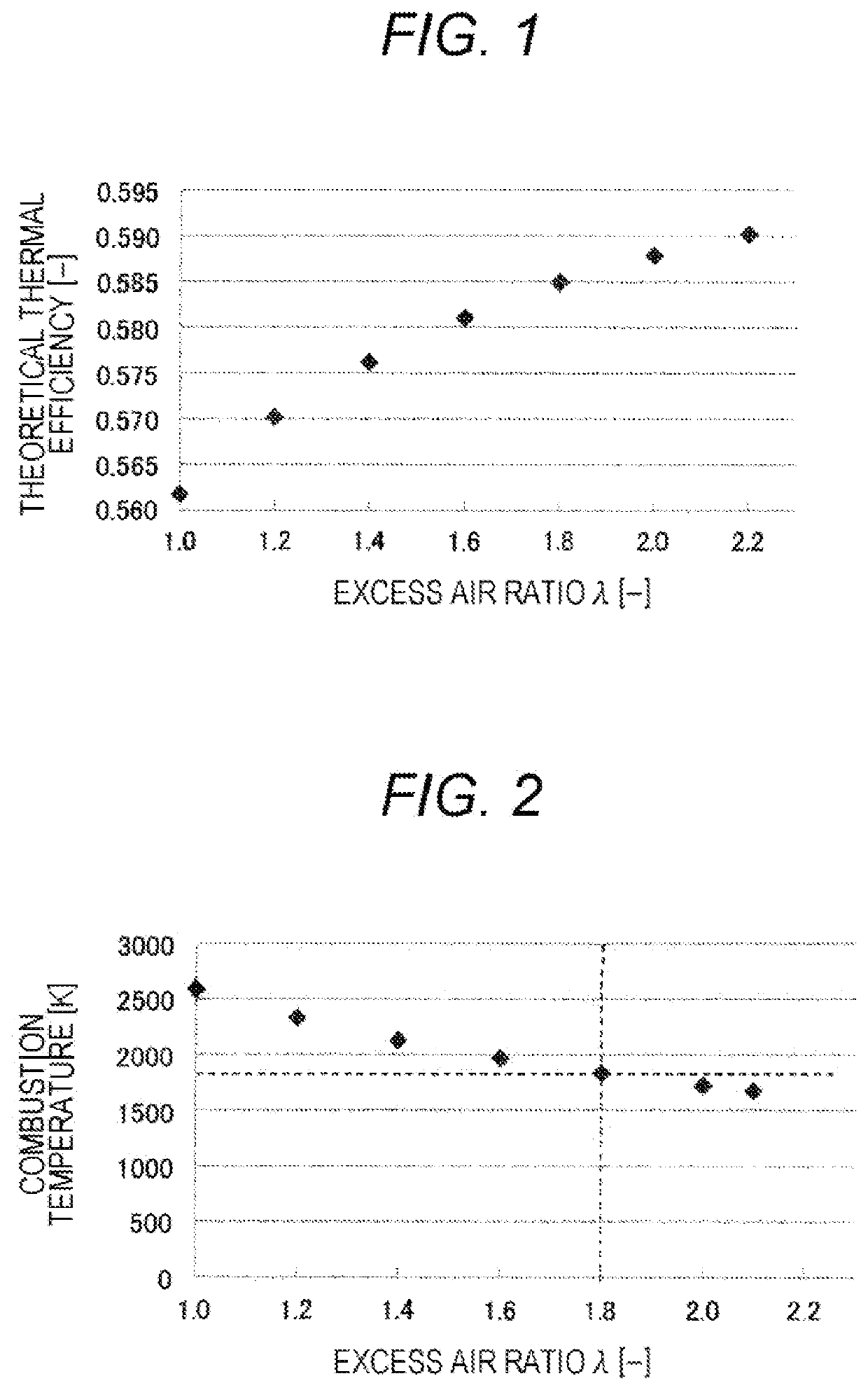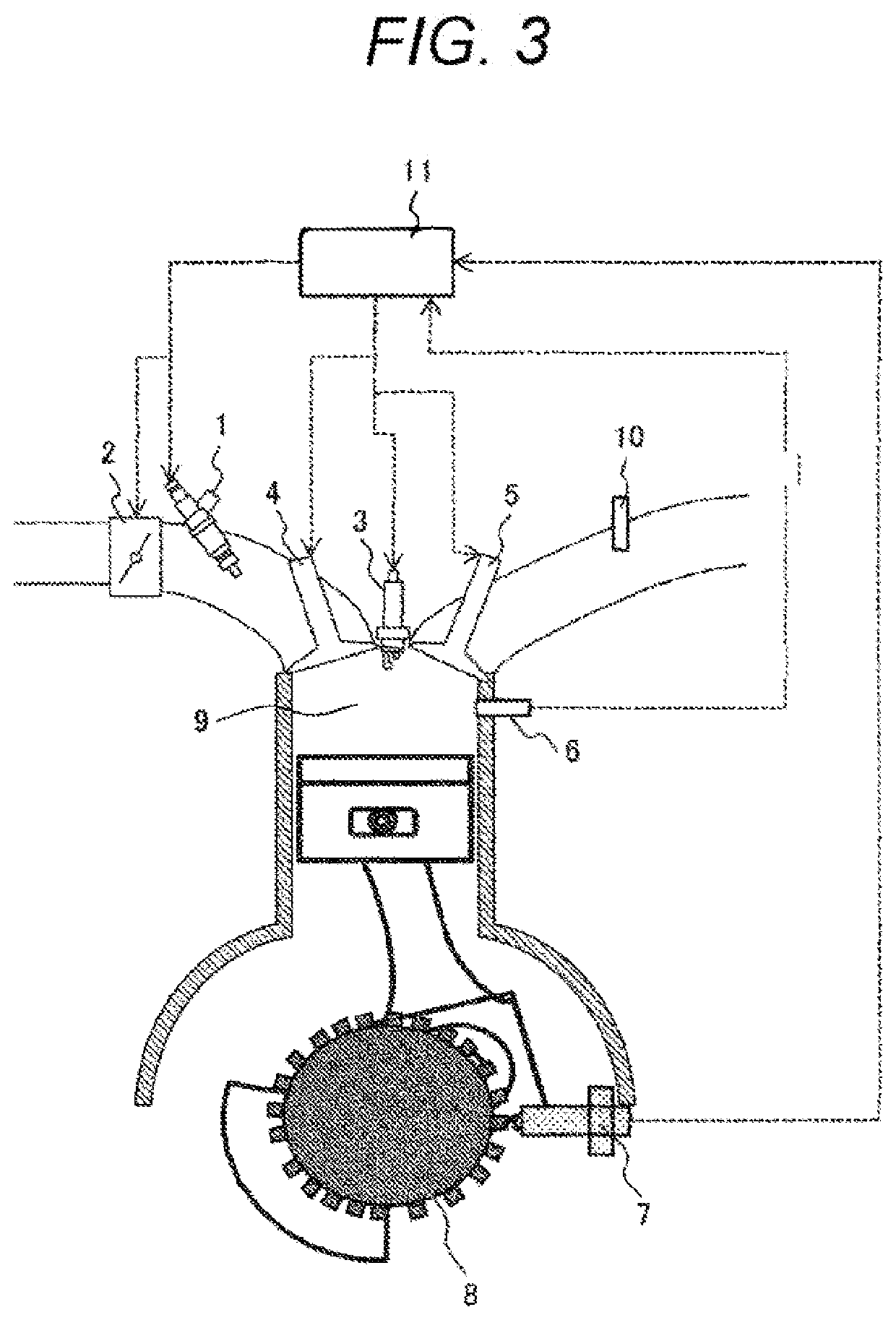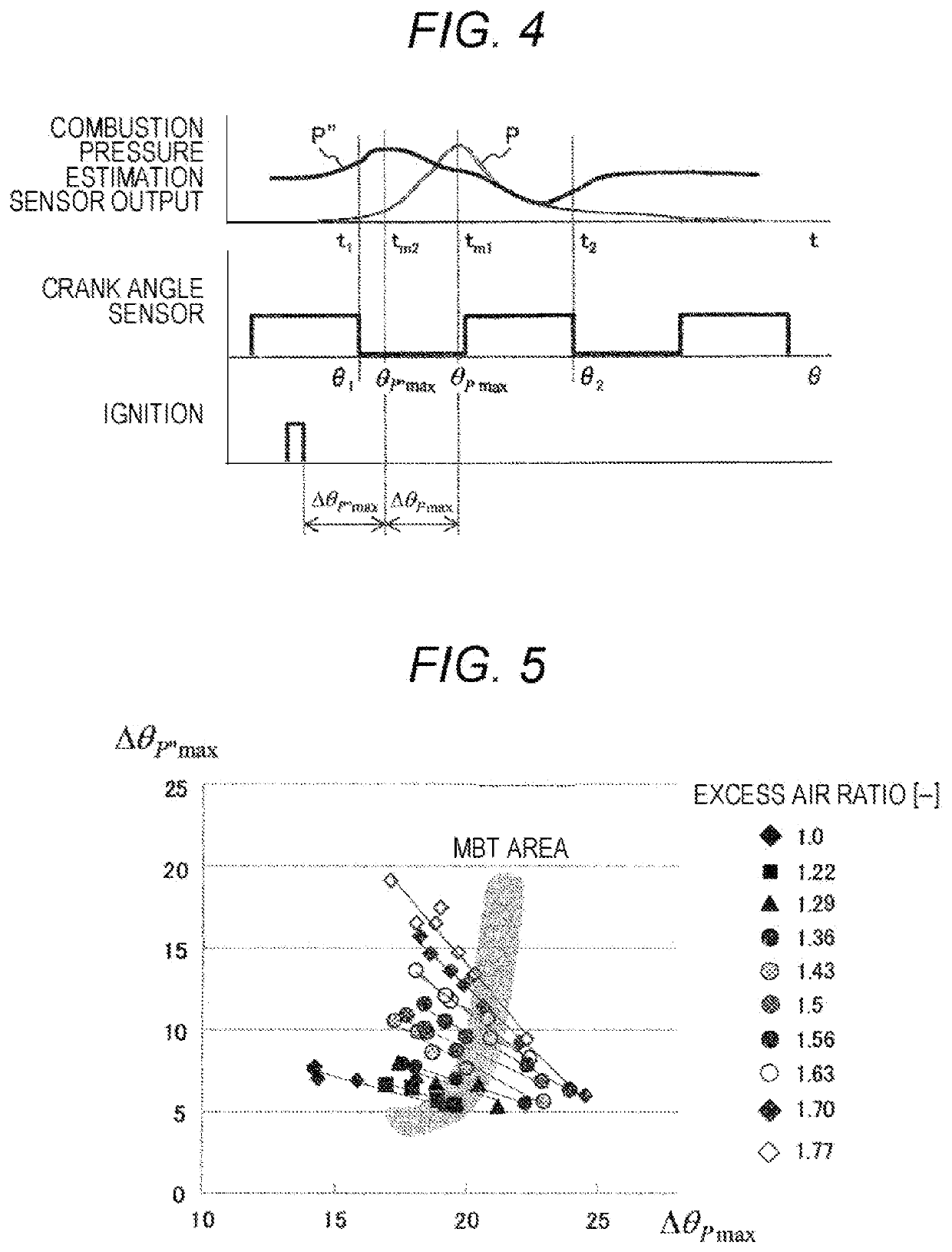Internal-Combustion-Engine Control Device and Internal-Combustion-Engine Control Method
a control device and combustion engine technology, applied in the direction of electric control, ignition automatic control, combustion air/fuel air treatment, etc., can solve the problems of low efficiency of spark ignition engine, unstable combustion, low efficiency of compression ignition engine, etc., to reduce the effect of nox emissions, high efficiency, and stable combustion
- Summary
- Abstract
- Description
- Claims
- Application Information
AI Technical Summary
Benefits of technology
Problems solved by technology
Method used
Image
Examples
first embodiment
[0029]First, characteristics of a lean-burn internal combustion engine (lean burn engine) will be described with reference to FIGS. 1 and 2. FIGS. 1 and 2 illustrate theoretical values of the thermal efficiency and the combustion temperature with respect to an excess air ratio (hereinafter, also referred to as “λ”) when the Otto cycle is set as a theoretical cycle.
[0030]As illustrated in FIGS. 1 and 2, in the lean burn engine, as the excess air ratio λ increases, the specific heat ratio of the working fluid (air-fuel mixture) increases, thereby improving the theoretical thermal efficiency and increasing, and the combustion temperature drops. Normally, when the combustion temperature is 1800 K or lower, NOx is theoretically not emitted. Therefore, it is understood that, when the excess air ratio λ is 1.8 or higher, both high thermal efficiency and low NOx are compatible.
[0031]On the other hand, as the excess air ratio λ increases, the laminar combustion velocity decreases, and there ...
second embodiment
[0064]A control device and a control method for an internal combustion engine according to a second embodiment will be described with reference to FIGS. 8 to 13.
[0065]In the lean combustion in which the excess air ratio λ is close to 2 as in the first embodiment, it is difficult to achieve a wide rotation speed and a wide torque range because the mountability of auxiliary devices such as a supercharger is restricted. FIG. 8 illustrates the operation zone of lean combustion where the excess air ratio λ is around 2.
[0066]At low loads, it is difficult to realize lean combustion due to the low temperature of the air-fuel mixture at the time of ignition. At high loads, auxiliary equipment such as a turbo is required. Therefore, it can be said that the first embodiment for realizing the lean combustion is suitable for operation at a medium load (operation zone (region) H). For this reason, it is necessary to perform combustion using EGR (Exhaust Gas Recirculation) at low load and high loa...
third embodiment
[0091]A control method for an internal combustion engine according to a third embodiment will be described with reference to FIG. 14. FIG. 14 is a flowchart illustrating a control method for each combustion zone (region) illustrated in FIG. 8.
[0092]First, in Step S101, the rotation speed of the engine is measured, and the torque is estimated. The rotation speed is measured by a rotation sensor (crank angle sensor) 7 of the crankshaft 8. The torque is estimated from any of the intake air amount, fuel amount, thermal efficiency, and accelerator opening.
[0093]Next, in Step S102, ΔθPmax and Δθ-P″max are calculated based on the measurement values of the combustion pressure estimation sensor 6.
[0094]Thereafter, in Step S103, the combustion zone (region) determination illustrated in FIG. 8 is performed. When the combustion zone (region) is G or I, since the combustion is an EGR rate control with the excess air ratio λ=1, the map of the EGR rate with ΔθPmax and ΔθP″max as axes and the MBT i...
PUM
 Login to View More
Login to View More Abstract
Description
Claims
Application Information
 Login to View More
Login to View More - R&D
- Intellectual Property
- Life Sciences
- Materials
- Tech Scout
- Unparalleled Data Quality
- Higher Quality Content
- 60% Fewer Hallucinations
Browse by: Latest US Patents, China's latest patents, Technical Efficacy Thesaurus, Application Domain, Technology Topic, Popular Technical Reports.
© 2025 PatSnap. All rights reserved.Legal|Privacy policy|Modern Slavery Act Transparency Statement|Sitemap|About US| Contact US: help@patsnap.com



